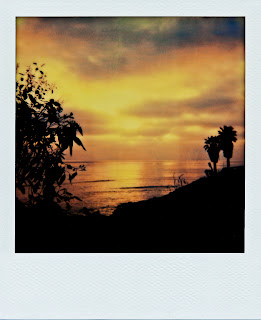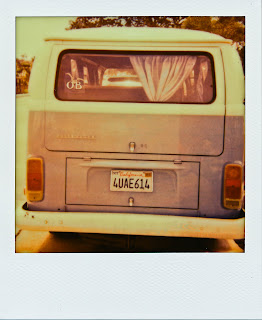As long as I can remember I have always loved taking pictures. I didn't really get into the art and technical aspect of photography until the digital age. I learned the basics on DSLR's, mainly the Nikon D40 and D90. I still have a ton to learn in the digital world, but I thought it would be fun to experiment with some film. I began looking around the local antique shops and actually wound up buying two old Polaroids; the Land Camera Model 103 and the Polaroid One Step (pictured below). In terms of film, Polaroids seemed relatively simple so I thought I'd give it a shot. I had no idea that film for these cameras would be hard to find, nor did I have any idea how expensive it would be.
Unfortunately, in 2008 Polaroid announced they would no longer manufacture film. In an attempt to save instant photography, the Impossible Project was created. The Impossible Project was originally started by 10 former Polaroid employees in 2008, after the downfall of Polaroid. This team literally had to start from scratch, as the original Polaroid dyes were no longer available. The "project" has been a trial and error learning process since then.
Of the two cameras I bought only the One Step uses Impossible film. The other uses Fuji packfilm which is a bit less expensive and still available in local camera shops. I eventually hope to acquire the old school Sx70, an actual SLR which will allow me to manually focus and actually create some shallow depth of field.
Camera & Film. Check.
A little bit about Impossible films...
The films have gotten mixed reviews and after some experimentation I can see why. I've had a few issues with the film and I'm not sure if it's the fact that I'm using a very old camera or if it is actually the film pack itself.
The first film I tried was Px70 Color Shade Cool film. The impossible team recommends refrigerating the film. The film is very sensitive to light (especially in the first few seconds) so they recommend immediately shielding it from light and then developing it facedown. They also recommend setting the darken wheel on the camera to 2/3 into the darken setting.
The first film I tried was Px70 Color Shade Cool film. The impossible team recommends refrigerating the film. The film is very sensitive to light (especially in the first few seconds) so they recommend immediately shielding it from light and then developing it facedown. They also recommend setting the darken wheel on the camera to 2/3 into the darken setting.
I bought this film on sale. $16.50 for a package of 8 exposures. Not really a bargain in my opinion, but cheap in terms of Impossible film. I found the film to be extremely light sensitive, requiring me to shoot directly into the film box to avoid any light hitting the exposure in the first few seconds. In my opinion my images turned out a bit too yellow, but overall I'm pleased with the effect. The film was produced in May of 2012 so age could have been a factor. I set the dial all the way into the darken setting and still ended up with some over-exposure. The film takes about 30-40 min to develop, but I did notice that the colors darkened and the tones deepened a bit over the coarse of a couple days.
Here are a few of the pictures I took. Certainly not my most exciting images, but I had fun experimenting.
Filter Coffee House ~ North Park
Me
A Laundromat. Obviously...
I like old cars...
Mr. D's ~ North Park
Inspiration
The next film that I bought from the Impossible Project was the Px70 Color Protection film. This film is a bit more expensive, costing $23.49 for 8 exposures. I am more optimistic in regards to this film. This film doesn't require you to shield it immediately from light, which in my opinion is a huge bonus. I've only shot one pack of this film and like what I see thus far. Here are my first 8 polaroids taken with this film.
Chewy
My Mini Quiver
San Diego Sunset
El Cajon Blvd.
Quick Tail Repair
OB
Sunset Cliffs
One California Day
Overall I can say I'm pretty stoked with the Impossible Project. I'm definitely looking forward to trying out their black and white film (Px100 Silver Shade Cool) and cannot wait to take some polaroids on my next trip!!! Stay tuned... There will be lots more and hopefully much better polaroids in my future.
http://www.the-impossible-project.com
"Don't undertake a project unless it is manifestly important and nearly impossible."
~ Dr. Edwin Land, Inventor and Founder of Polaroid


















 Pin it
Pin it Share This
Share This Tweet This
Tweet This